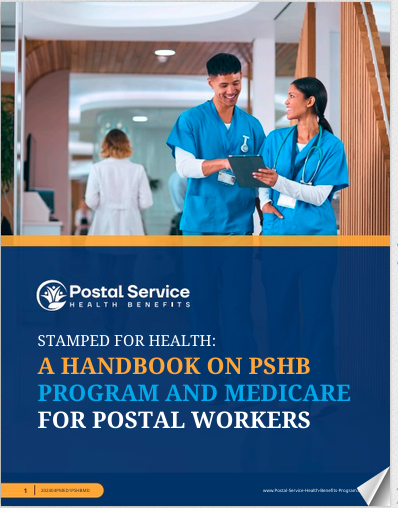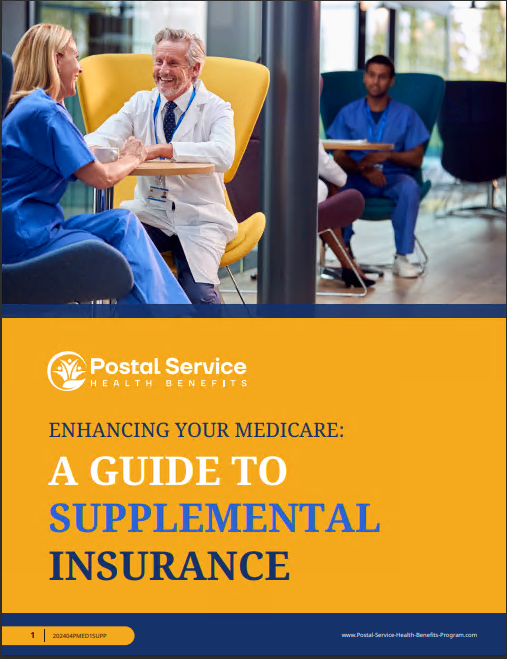Key Takeaways
-
Medigap premiums can significantly impact your total healthcare costs under the Postal Service Health Benefits (PSHB) program, so understanding the factors influencing these costs is essential.
-
Your Medicare enrollment choices and timing affect Medigap eligibility and premium rates, making it crucial to plan accordingly.
Understanding Medigap in the PSHB Landscape
The Postal Service Health Benefits (PSHB) program, launching in 2025, marks a major shift in healthcare coverage for USPS employees and retirees. If you’re a Medicare-eligible postal worker, you may be considering Medigap as a way to help cover out-of-pocket expenses. But how do Medigap premiums fit into the PSHB system, and what factors should you keep in mind when evaluating your options?
Let’s break down five essential details every postal worker should consider before making a Medigap decision.
1. How Medigap Works with Medicare and PSHB
Medigap, also known as Medicare Supplement Insurance, helps cover some of the costs that Original Medicare doesn’t, such as deductibles, copayments, and coinsurance. However, its role in the PSHB program depends on your Medicare enrollment status.
-
If you’re already enrolled in Medicare Part A and Part B, Medigap may be an option to reduce out-of-pocket expenses.
-
If you’re not yet enrolled in Medicare, PSHB plans will likely be your primary coverage until you sign up for Medicare.
-
Since most PSHB plans integrate with Medicare, you may find that Medigap is not necessary for covering gaps in coverage.
While Medigap can provide peace of mind by limiting unexpected healthcare costs, you’ll need to weigh its costs against the benefits you’re already receiving under PSHB.
2. Medigap Premiums Depend on Several Key Factors
Like any insurance, Medigap policies come with monthly premiums that can vary based on several factors. Here’s what influences Medigap premium rates:
-
Age and Enrollment Timing – Premiums tend to be lower if you enroll during your Medigap Open Enrollment Period (the six-month window after enrolling in Medicare Part B).
-
Geographic Location – Where you live impacts costs, as some states regulate Medigap pricing differently.
-
Plan Choice – Different Medigap plans offer varying coverage levels, and those with more benefits usually cost more.
-
Community vs. Attained-Age Pricing – Some plans charge everyone the same rate, while others increase your premium as you age.
-
Health Status (if Enrolling Late) – If you try to enroll outside of your Open Enrollment Period, you may face medical underwriting that results in higher premiums.
Given these factors, it’s crucial to plan ahead and determine whether Medigap is a cost-effective choice based on your unique situation.
3. Medicare Part B Enrollment and Medigap Eligibility
Medigap policies only work alongside Original Medicare, meaning you must be enrolled in both Medicare Part A and Part B to qualify. With the new PSHB program, Medicare-eligible retirees and their dependents must enroll in Medicare Part B to maintain PSHB coverage.
Since Medigap covers expenses that Medicare doesn’t, such as copayments and coinsurance, having Part B is a prerequisite. However, if your PSHB plan offers additional cost-sharing benefits when combined with Medicare, you might not need Medigap at all.
This is why understanding how PSHB interacts with Medicare is crucial before making a decision about Medigap.
4. Medigap vs. PSHB: Which Offers the Best Value?
For many postal retirees, the biggest question is whether Medigap is worth the extra cost when PSHB and Medicare already provide comprehensive coverage. Here’s a comparison of key factors to consider:
| Feature | PSHB with Medicare | Medigap with Medicare |
|---|---|---|
| Premiums | Varies by plan | Additional monthly cost |
| Deductibles & Copays | Some cost-sharing remains | Covers most out-of-pocket costs |
| Provider Network | Broad with Medicare integration | Medicare providers nationwide |
| Prescription Drug Coverage | Included in most plans | Requires separate Part D plan |
| Additional Benefits | Vision, dental, hearing | None (only covers Medicare gaps) |
If your PSHB plan offers strong Medicare integration with low out-of-pocket costs, Medigap may not be necessary. However, if you want predictable healthcare expenses and prefer to eliminate cost-sharing, Medigap might be worth considering.
5. Enrollment Deadlines and Guaranteed Issue Rights
Timing is everything when it comes to Medigap enrollment. Here are key deadlines and protections you should be aware of:
-
Medigap Open Enrollment – This six-month period starts when you enroll in Medicare Part B at age 65 or older. During this time, you can buy any Medigap policy without worrying about higher rates due to pre-existing conditions.
-
Guaranteed Issue Rights – If you lose certain health coverage (such as employer-sponsored retiree coverage), you may qualify for a special enrollment period where insurers must sell you a Medigap policy without medical underwriting.
-
Late Enrollment Risks – If you wait too long, you could face higher premiums or even denial based on your health status.
Since the transition to PSHB is happening in 2025, it’s essential to review your eligibility and enrollment options now to avoid missing crucial deadlines.
Making the Right Choice for Your Needs
Deciding whether to enroll in a Medigap plan under the PSHB program depends on your healthcare needs, budget, and future plans. If your PSHB plan already reduces Medicare cost-sharing, you might not need Medigap. However, if you want complete financial predictability, Medigap could be a valuable option.
With the right information, you can make a well-informed choice that ensures you get the best possible coverage for your situation. If you’re still unsure, speaking with a licensed agent listed on this website can help you explore your options and determine the best plan for your needs.







